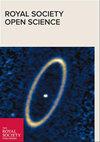Spatial and seasonal foraging patterns drive diet differences among north Pacific resident killer whale populations.
IF 2.9
3区 综合性期刊
Q1 MULTIDISCIPLINARY SCIENCES
引用次数: 0
Abstract
Highly social top marine predators, including many cetaceans, exhibit culturally learned ecological behaviours such as diet preference and foraging strategy that can affect their resilience to competition or anthropogenic impacts. When these species are also endangered, conservation efforts require management strategies based on a comprehensive understanding of the variability in these behaviours. In the northeast Pacific Ocean, three partially sympatric populations of resident killer whales occupy coastal ecosystems from California to Alaska. One population (southern resident killer whales) is endangered, while another (southern Alaska resident killer whales) has exhibited positive abundance trends for the last several decades. Using 185 faecal samples collected from both populations between 2011 and 2021, we compare variability in diet preference to provide insight into differences in foraging patterns that may be linked with the relative success and decline of these populations. We find broad similarities in the diet of the two populations, with differences arising from spatiotemporal and social variability in resource use patterns, especially in the timing of shifts between target prey species. The results described here highlight the importance of comprehensive longitudinal monitoring of foraging ecology to inform management strategies for endangered, highly social top marine predators.空间和季节性觅食模式导致北太平洋虎鲸种群之间的饮食差异。
包括许多鲸目动物在内的高度社会化的顶级海洋食肉动物会表现出从文化中习得的生态行为,如饮食偏好和觅食策略,这些行为会影响它们对竞争或人为影响的适应力。当这些物种也濒临灭绝时,保护工作需要在全面了解这些行为变化的基础上制定管理策略。在太平洋东北部,从加利福尼亚到阿拉斯加的沿海生态系统中有三个部分同域的虎鲸种群。其中一个种群(南虎鲸)已濒临灭绝,而另一个种群(阿拉斯加南部虎鲸)在过去几十年中表现出积极的丰量趋势。利用 2011 年至 2021 年间从这两个种群收集的 185 份粪便样本,我们比较了饮食偏好的变化,以深入了解可能与这些种群的相对成功和衰退有关的觅食模式差异。我们发现这两个种群的饮食具有广泛的相似性,差异来自资源利用模式的时空和社会变异性,尤其是目标猎物物种之间的时间转换。本文描述的结果凸显了对觅食生态进行全面纵向监测的重要性,从而为濒危、高度社会化的顶级海洋掠食者的管理策略提供依据。
本文章由计算机程序翻译,如有差异,请以英文原文为准。
求助全文
约1分钟内获得全文
求助全文
来源期刊

Royal Society Open Science
Multidisciplinary-Multidisciplinary
CiteScore
6.00
自引率
0.00%
发文量
508
审稿时长
14 weeks
期刊介绍:
Royal Society Open Science is a new open journal publishing high-quality original research across the entire range of science on the basis of objective peer-review.
The journal covers the entire range of science and mathematics and will allow the Society to publish all the high-quality work it receives without the usual restrictions on scope, length or impact.
文献相关原料
| 公司名称 | 产品信息 | 采购帮参考价格 |
|---|
 求助内容:
求助内容: 应助结果提醒方式:
应助结果提醒方式:


